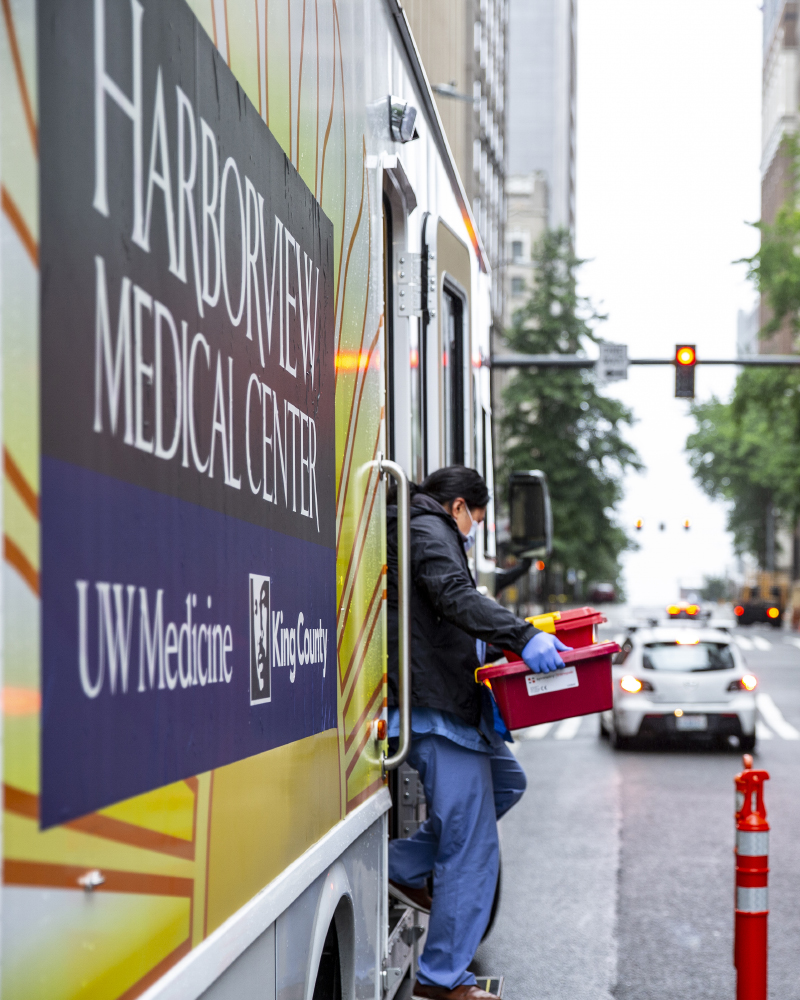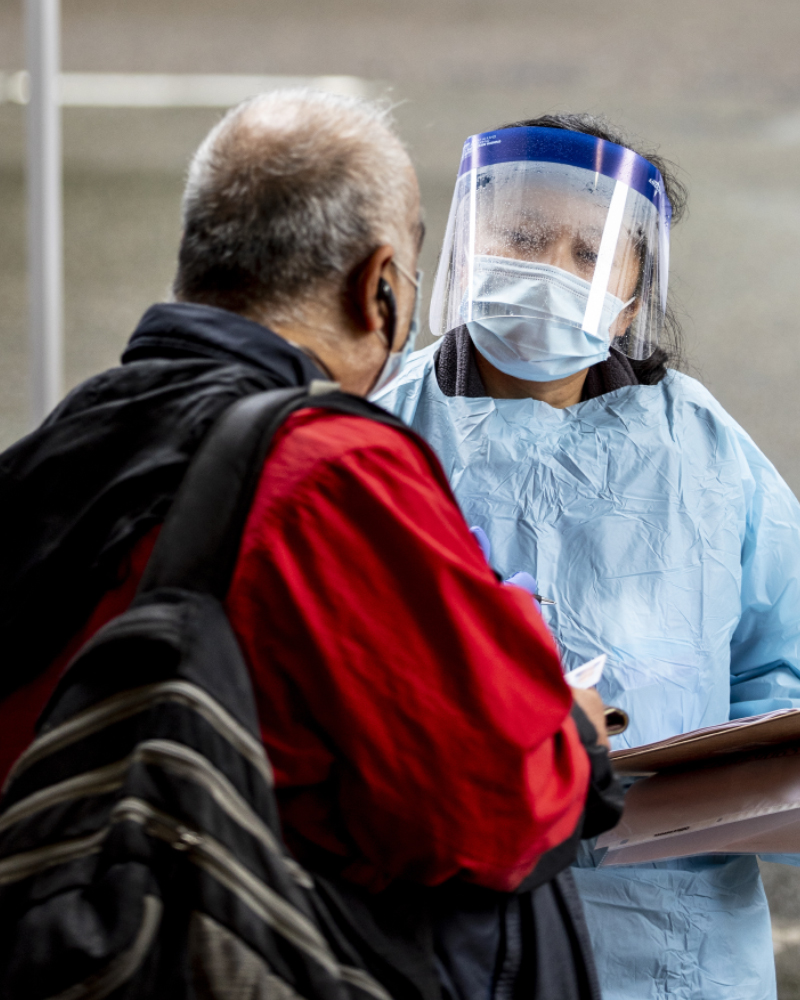When Paula Houston, EdD, her team and leaders from Harborview Medical Center started reviewing demographic data on who was getting — and being hospitalized for — COVID-19 in the UW Medicine system, they were deeply troubled. The pandemic had been described as a “great equalizer.” But the truth was that there was nothing equal about the burden of the novel coronavirus. Some vulnerable groups were much more likely to test positive — and to become seriously ill.
“We first became concerned when we saw the disproportionate numbers of limited English proficient (LEP) patients who had tested positive and were being hospitalized,” says Houston, the chief equity officer for UW Medicine and associate vice president for medical affairs for the University of Washington. “This led us to begin capturing all race, ethnicity and language data, along with information on housing security.”
“It was no surprise that we began seeing the highest burden of disease in our Black, Latinx and LEP patients, as we already have data that tells us these communities experience higher rates of conditions, such as diabetes and heart disease, which exacerbate the effects of COVID-19. This put a magnifying glass on the structural inequities in our healthcare system that contribute to these disparities,” says Houston.
The discovery accelerated the creation of a new Office of Healthcare Equity at UW Medicine — led by Houston — and a strengthened commitment to addressing the root causes of health disparities, both in our own health system and across the region.
Their findings have also helped to shape COVID-19 public health strategies for three communities that are at a much higher risk from the pandemic: people experiencing homelessness, people of color and our elders.



